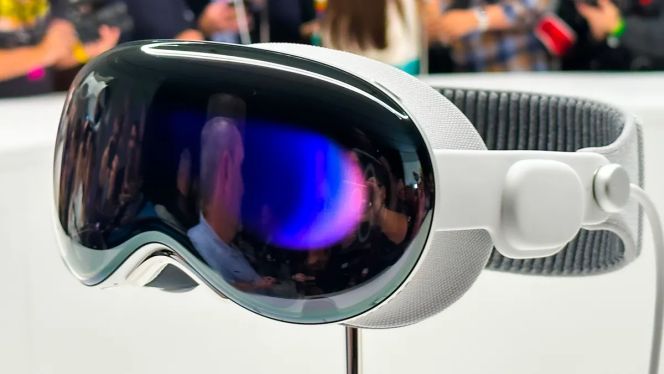TECH NEWS – Apart from artificial intelligence, which is sure to be the biggest buzzword of the entire CES 2024, it seems that the intersection of VR and AR will take second place, threatening the monopoly of Apple’s Vision Pro…
The development of the area dominated by Apple Vision Pro has so far followed two parallel paths. One is dominated by simple AR glasses. These pack prisms behind the lenses to essentially be a glorified external display for your Steam Deck or other device. Of course, eliminating neck pain from bending over the display is worth the price of admission in itself. But the feature set is a bit thin right now.
Then there are headsets like the Meta Quest 3 and Apple’s Vision Pro, which are much closer to the sci-fi future we’ve all dreamed of, with a Ready Player One-like virtual space that merges with the real world.
It’s great to use. But let’s be honest – the vision any company has of us wearing such a gigantic pair of headphones while on the go looks a bit silly.
The question arises: where to go next? There seems to be an obvious line between VR headsets and AR glasses and what they can do.
Could there be a fusion between Apple Vision Pro and AR glasses?
One thing is clear – these two parallel lines of technological development will soon intersect. The dream of the future is XR technology like the Apple Vision Pro in a device the size of AR glasses. The previous assumption was that anything remotely resembling this would be available in a few years.
Even Xreal thinks so, with co-founder Peng Jin (aka PJ) talking about “wearable computing” being the next big step.
Questions to be asked about this future include whether users will still be happy to carry around multiple devices. Or rather, they just want one. It would be the difference between connecting to your phone wirelessly to render the image or relying on the cloud to render every VR scenario you watch. This would require a significant server infrastructure and a lot of power to run.
Regardless of which option we choose, it’s pretty clear in the company’s product agenda that it’s bringing more and more virtual environment-based interactivity to the headset.
But that doesn’t stop experimentation, as PJ mentioned that he’s experimenting with bone-conduction audio and even new display technologies that eliminate prisms.
What does the (relatively near) future hold?
It will probably take some time for the technology to scale down until a new type of computing is found entirely in a pair of glasses. Or not?
Well, all signs point to some big improvements coming to the XR, which conveniently leads to predictions for the big show starting in a few days.
According to experts, we’ll see three key things that will start us on the road to the ultimate XR glasses: Display technology that completely removes glass prisms from your eyes, device-free computing and hand tracking inside the glasses.
However, here comes the exciting part. We will unlikely see them combined in one set of glasses for the time being. The AR space is quickly becoming competitive (currently led by Xreal with 51% of the market share), and each company is riding a different horse.
Xreal Air 2 aims for game simplicity and spatial computing, Viture aims for a fully-fledged sensory experience with all accessories, and TCL Rayneo glasses want to provide the best possible image in the most minimal form possible.
All this results in an interesting difference. It won’t end until one of the winners decides to bring it all together, taking some lessons from VR headsets and bringing the two categories together. In any case, we will be brighter after CES 2024…
Source: Tom’s Guide
















Leave a Reply